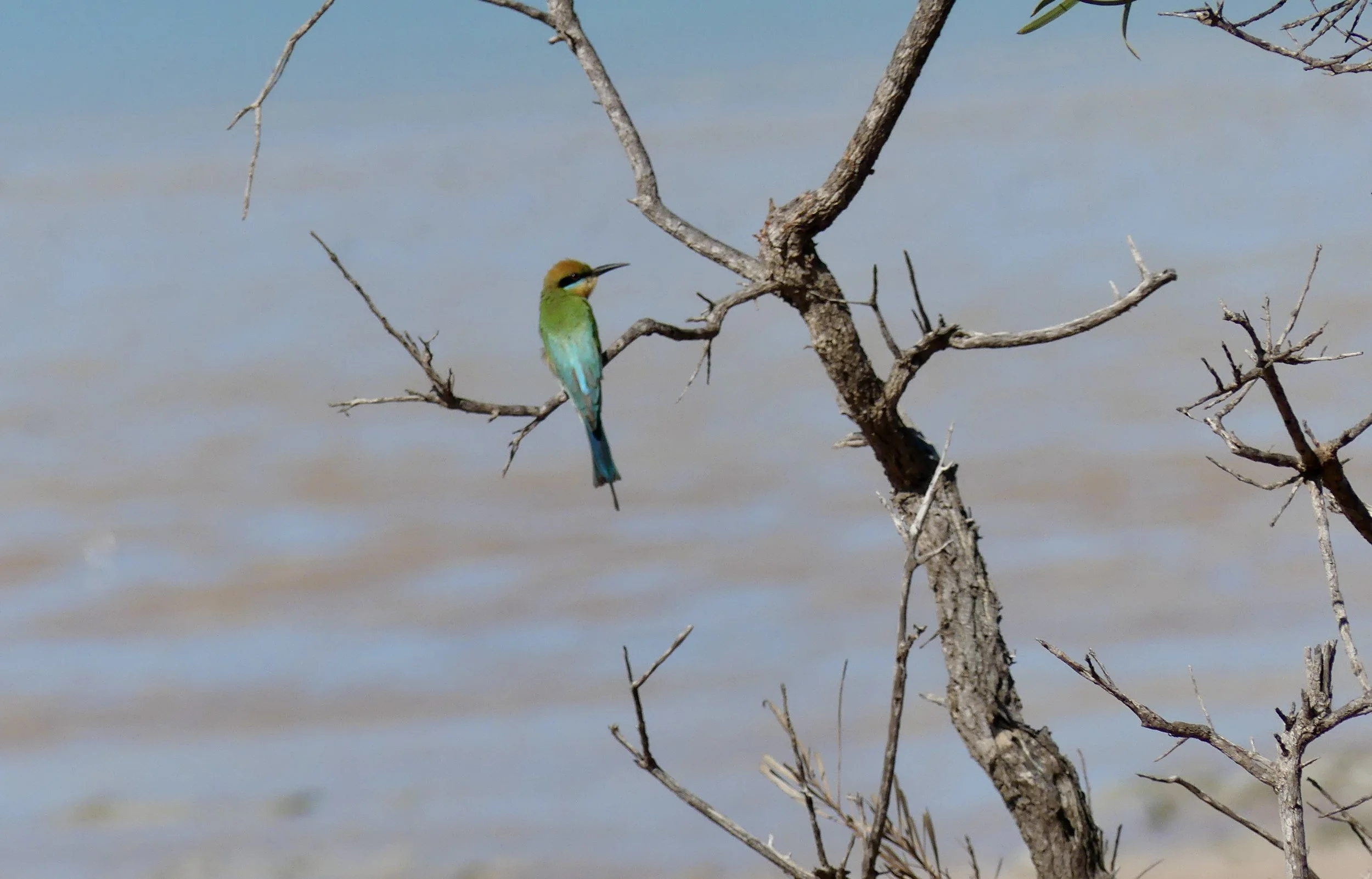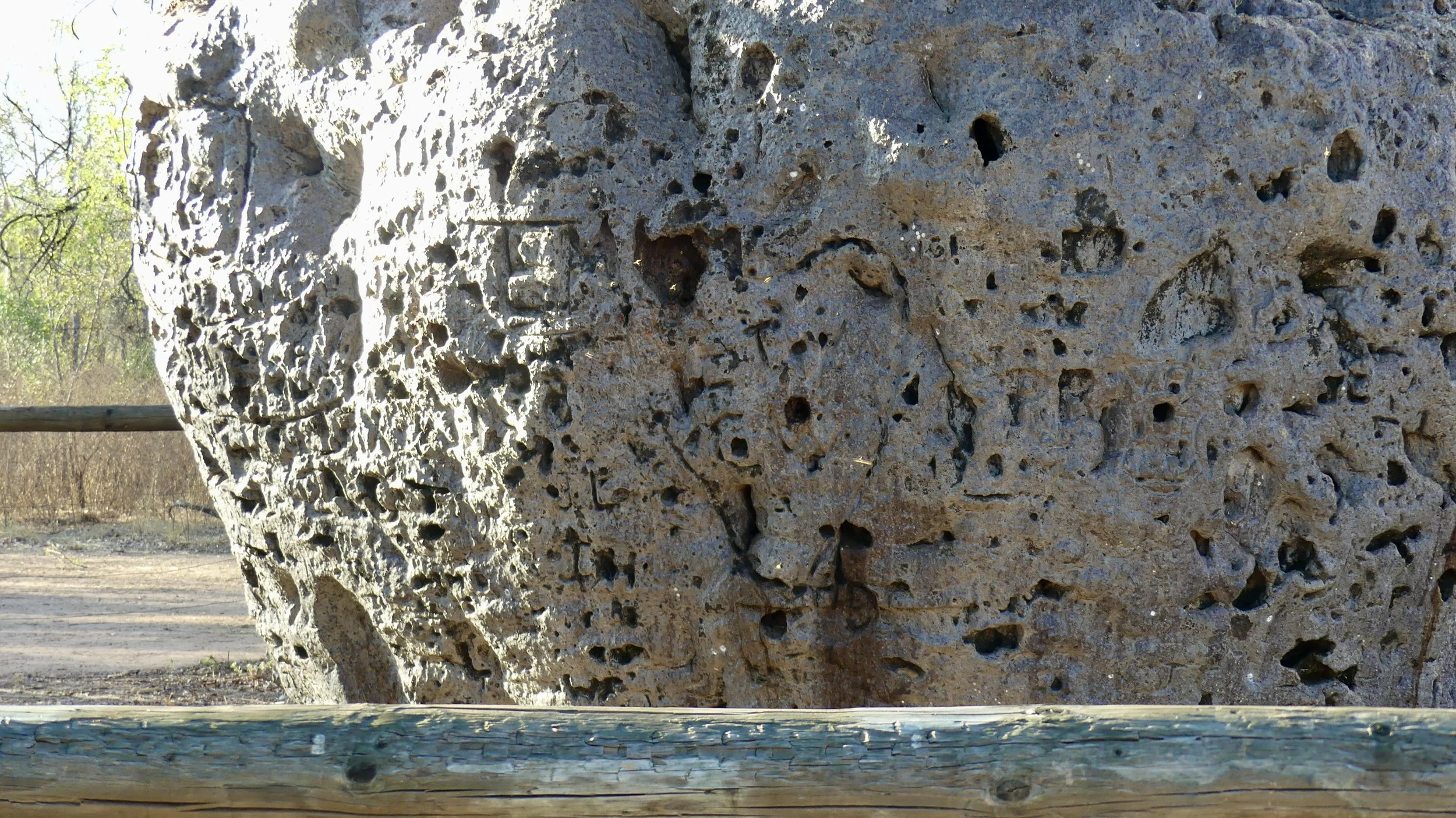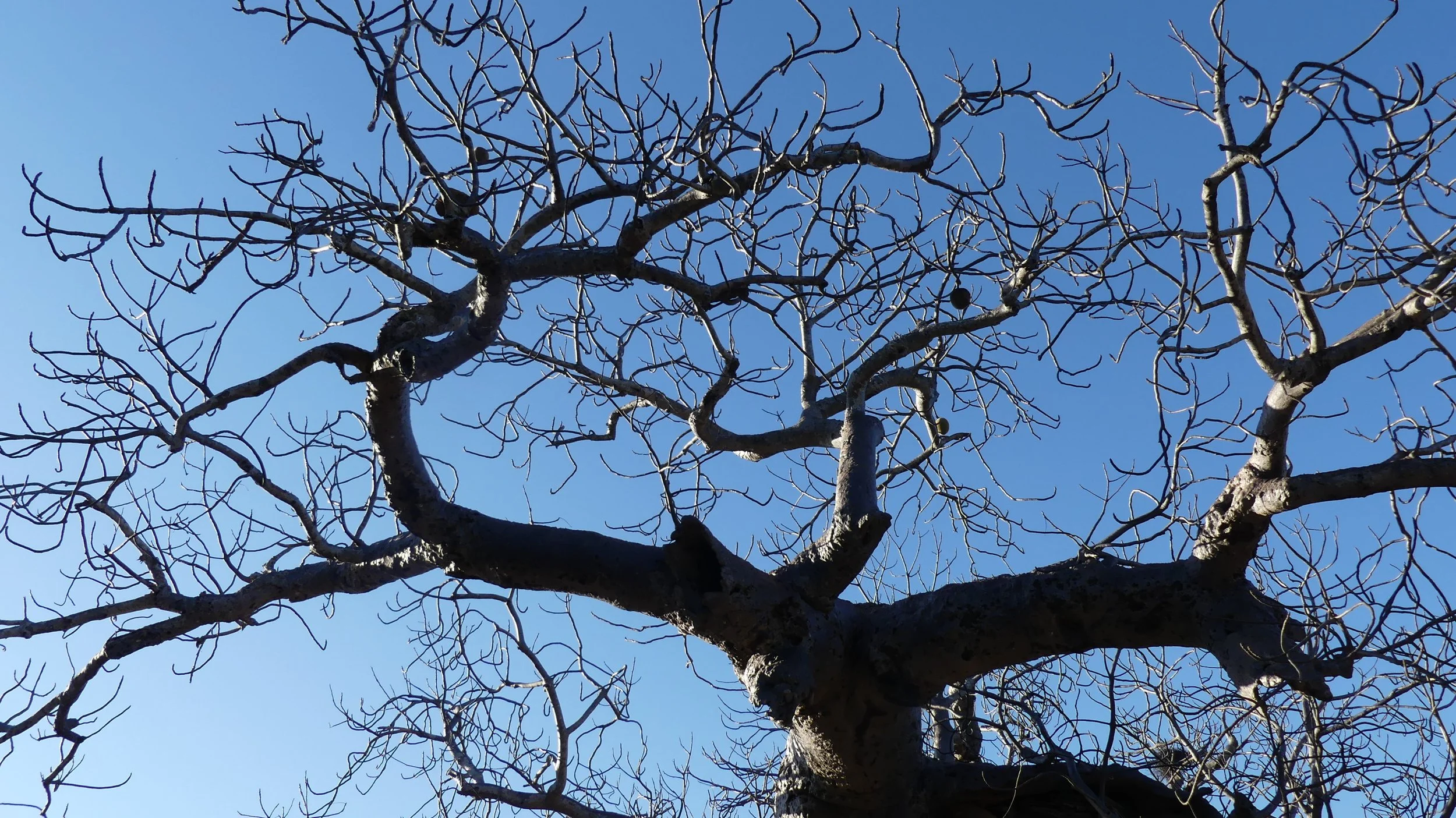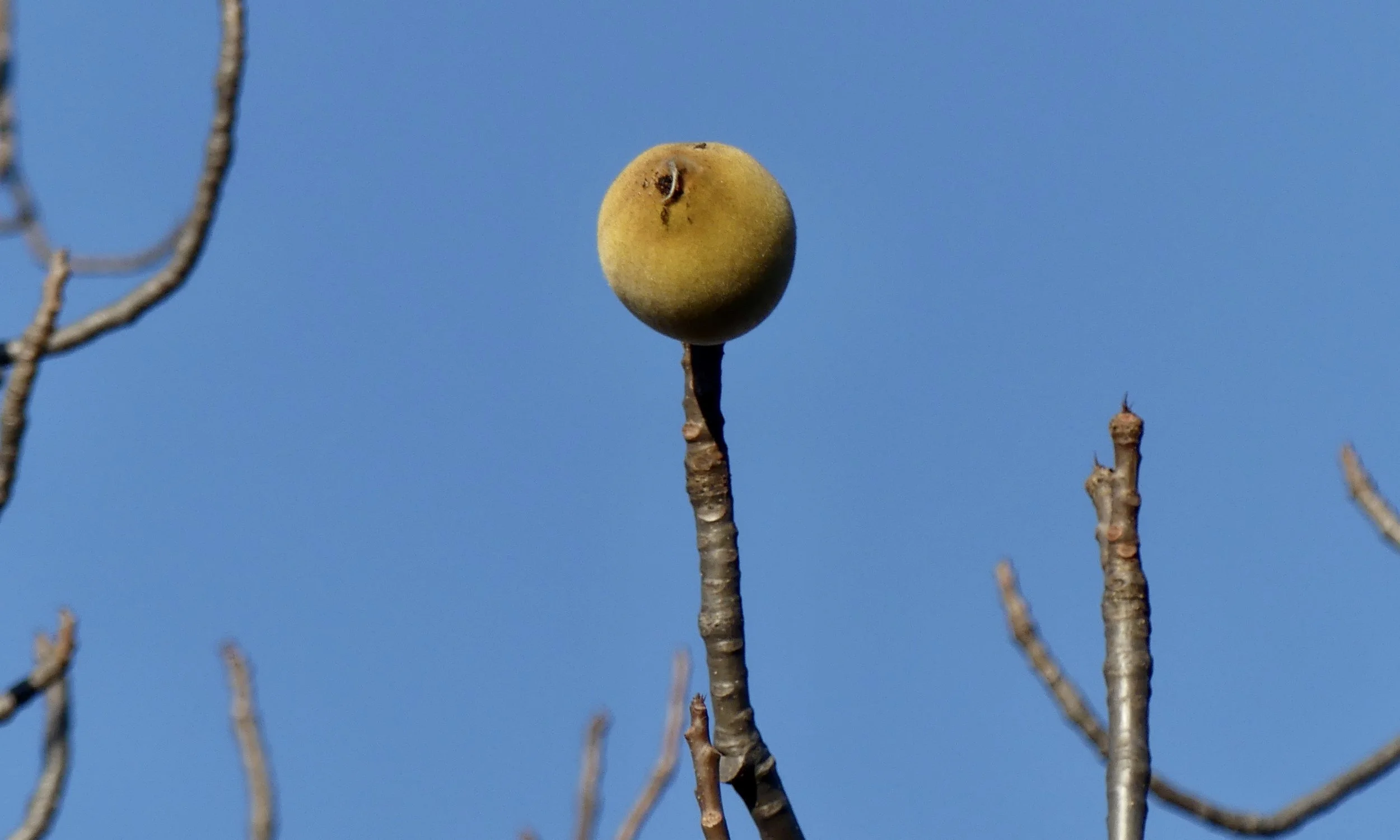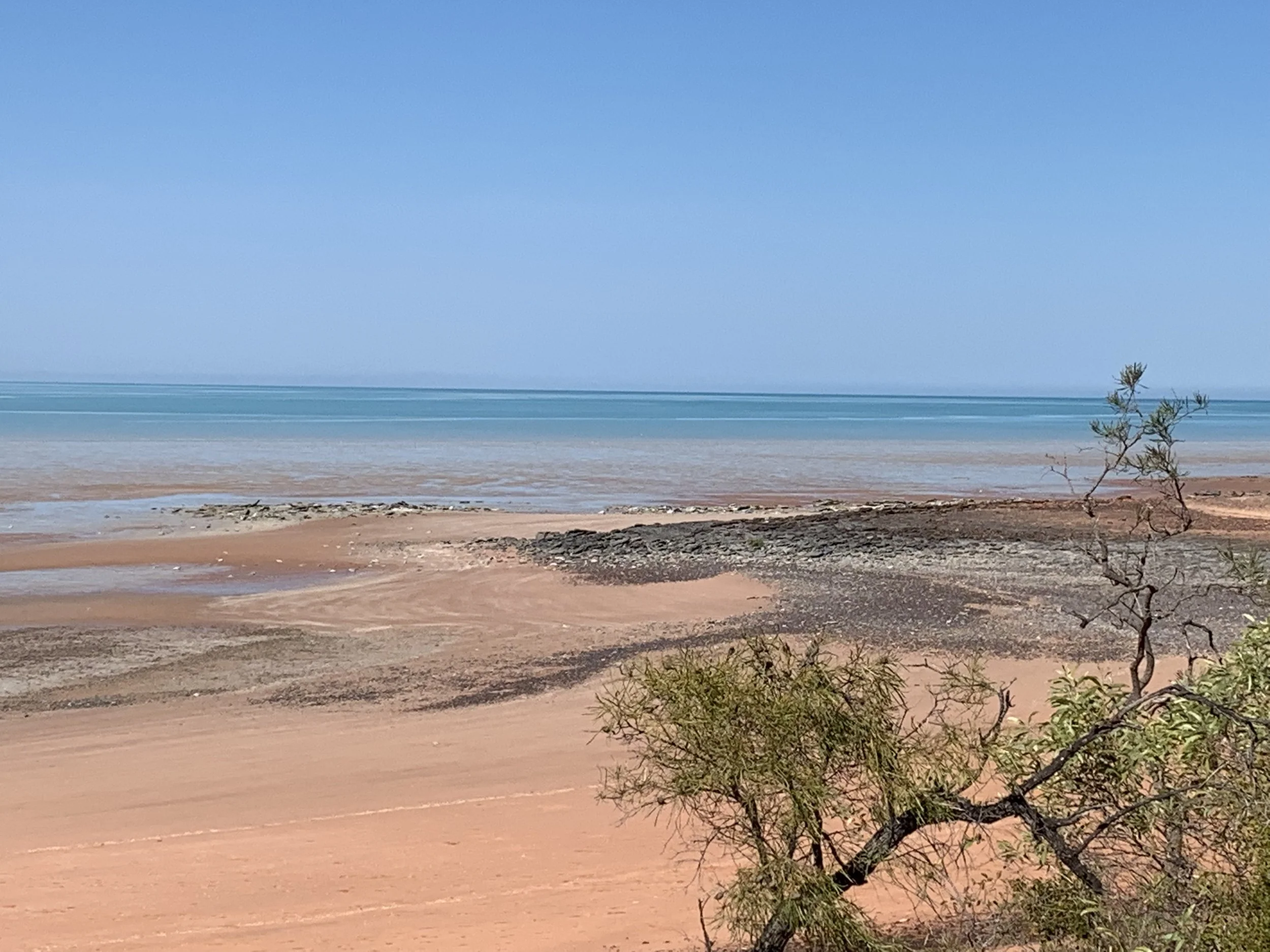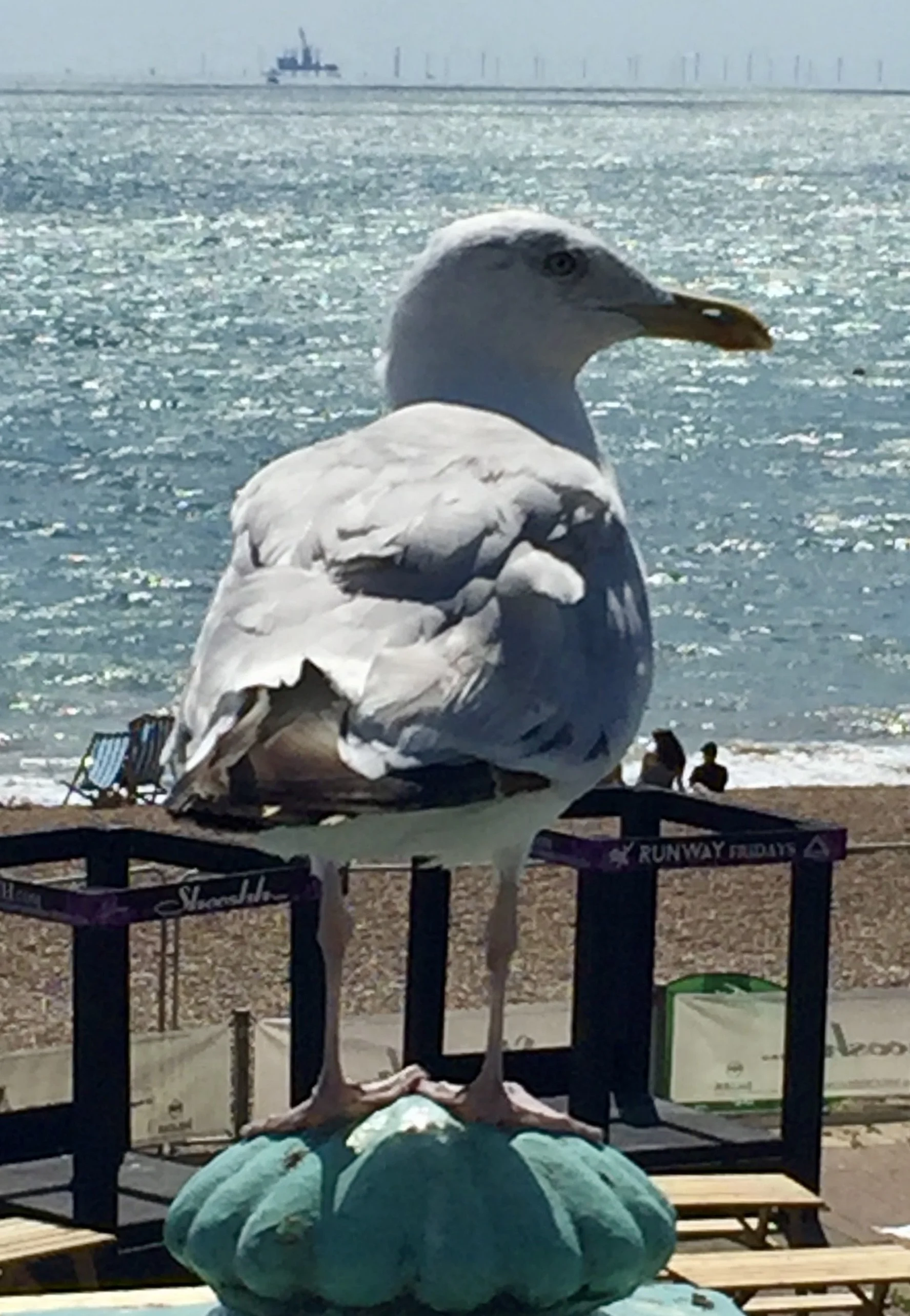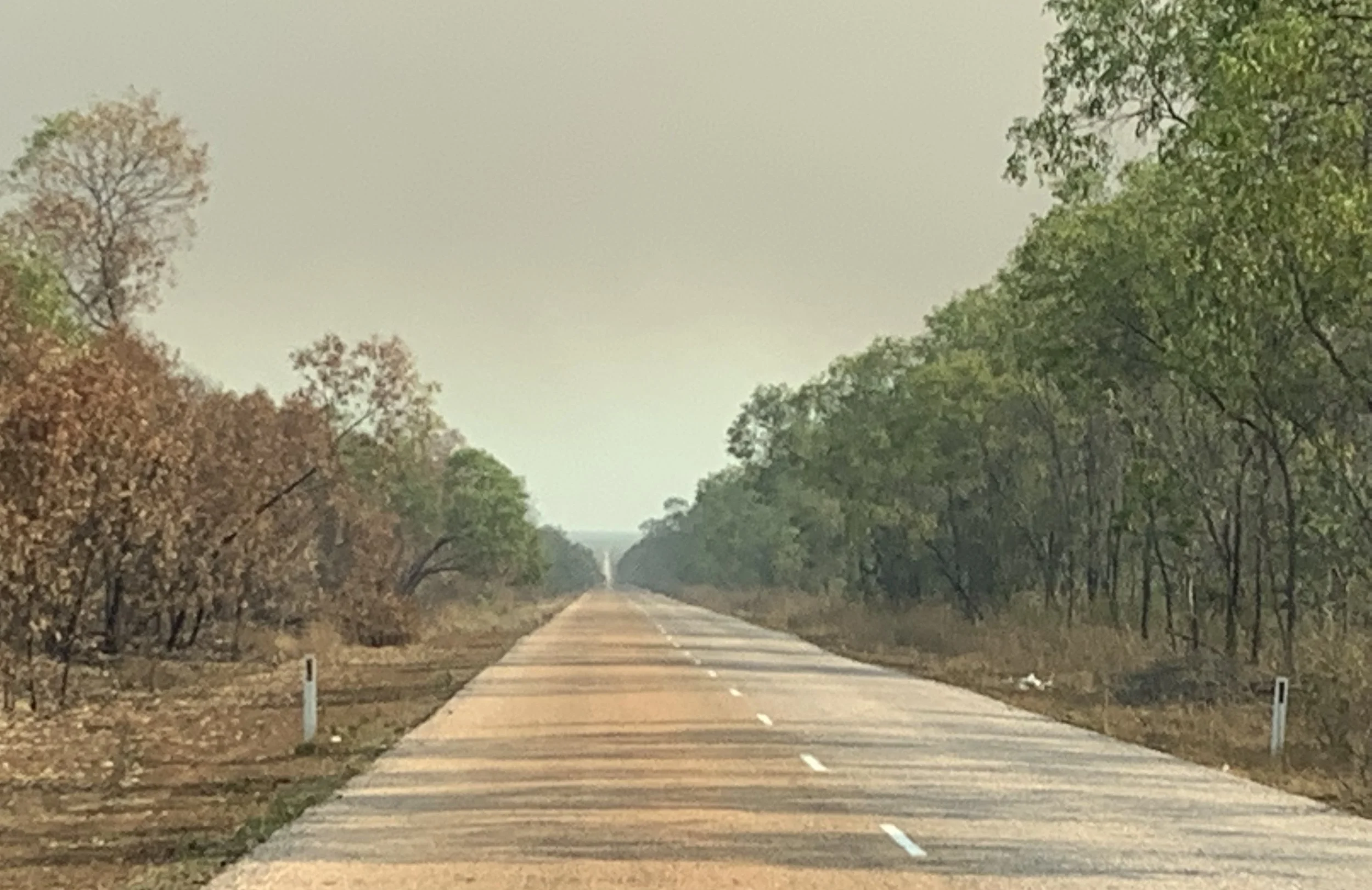Birds and bottles in Broome
Several days in Broome included visits to Cable Beach, Broome Bird Observatory, Cygnet Bay and Fitzroy Crossing. There were several massive baobab trees here and there. We came across one that had so great a girth – at least 14 metres – it is claimed to have been used to impound alleged offenders on their way to Derby for sentencing. This is probably a myth, but it’s a good story, and travellers may well have stopped by here for hundreds if not thousands of years to shelter and rest or convene with others.
Just a quick explainer about bottle trees: warning, minefield ahead! The genus – the taxonomic rank above species, but below family in the hierarchy of biological classification – is the common name given to all bottle trees in Australia, which is boab, a short form of boabab. But it does have other names, such as baobab, or Australian baobab. The boab – as I shall call it – is endemic in northeastern regions of Western Australia and northwestern areas of Northern Territory. Gadawon is one of several Aboriginal names for the boab: another is larrgadi, or larrgadiy, used by those speaking Nyulnyulan languages in the western Kimberley. Then there are many English-Australian names for this iconic dry-lands tree: monkey bread tree; upside down tree; dead rat tree; gourd-gourd; cream of tartar tree; and gouty stem tree, my favourite option.
Ancient stories and cultural symbols have been depicted in carvings into boab tree bark over many centuries. Recently Australian university researchers have been collaborating with Aboriginal communities to record images of these dendroglyphs, as the carvings are called, and interpret their symbolism and significance in Aboriginal mythology.
Boab fruit
There are, of course, less welcome messages carved in bottle-tree bark by vandals who feel a need to make their mark upon the natural world. I’ve seen many examples but have never as yet come across an idiot in the act, so I don’t know how I would react. My friend, I’m sure, would encourage me to just walk away from such a situation, but that would be hard. Wanton vandalism should not be tolerated, especially in an increasingly desecrated world.
Some readers may recall how and why I started to campaign for better laws to protect the environment. I hadn’t lived in Brisbane long when I learned of a farmer and Nature Refuge owner in Central Queensland engaged in a battle to prevent one of Australia’s richest yet greediest coal men from excavating a new mine in the middle of the Sunshine State, which has multiple energy options, many of them renewables rather than dirty old coal. Nearly 15 years on, the same battles are still being fought... I take to the streets of London now, not Brisbane, to plead the case for prioritising our home lands over the obsession with ever greater economic growth. We are the only animal on earth that fouls its own nest to such an extent.
Some days it’s hard to see a way through the morass. And I miss friends and colleagues of like mind in Queensland and Melbourne. A couple of weeks or so ago, a pal from Brighton in Melbourne, an English woman visiting family back in the UK, touched base with me before returning to Aus. We tried to meet up but were thwarted by different locations and limited time. It was great to hear her voice and news from Aus, and I was reconnected to a cause I have found harder to pick up and run with here than I did down under. An overcrowded island has less space in which to stretch the mind; and fewer unspoilt sanctuaries in which to soothe the soul.
Meanwhile, back on the Big Trip, in and around Broome in Western Australia, it was hot hot hot! Unfortunately, there weren’t any early-morning tours available at the Bird Observatory, which was disappointing. We decided to go and take a look ourselves, and were rewarded with a splendid Rainbow Bee-eater (top of page). The track was sandy but surprisingly bumpy, perhaps because we hadn’t adjusted tyre pressures sufficiently, which we’d have to in a couple of days, ready for Wolfe Creek. The tide was far out, and the many birds appeared little more than dots, and impossible to identify. It was, despite minor frustrations, a pleasing outlook across the water.
Cable Beach
Birds at the beach
Red-breasted Babbler gang
I discovered birds properly, like a grown-up, when we went to live in Australia. And a couple of books by Jennifer Ackerman – The Bird Way and The Genius of Birds – proved as unputdownable as good fiction. ‘Birds cry like children, grunt like pigs, meow like cats, and sing like divas. They speak in dialects and carol in pairs and choruses. They glean all sorts of information from calls and songs – a singer’s species identity, its geographic origin, group membership, even its individual identity. And they use sound in ingenious ways – to share information, negotiate boundaries, and influence one another’s behaviour.’
Birds are clever in so many ways, but I had no idea just how clever for too long. It was impossible not to want to get to know Australian birds, however, who range from absolute nutters to extraordinary constructors. I will forever be in awe of their skills, their outfits and their voices, and will never forget the first Catbird I heard, in northern New South Wales. I’m still not absolutely sure it was a Catbird, in fact, and not a lost toddler crying in the wilderness.
Having returned to the UK, I am getting to know our own birds better. In the English Brighton, an extra-large Herring Gull might win a battle with, and carry off, an extra-small yappy dog. (We live in hope!) Unsuspecting tourists often hold up chips to adeptly swooping gulls. I don’t know if there are any stats for fingers and chips, but I believe it’s highly likely that in a few decades seagulls here will be the size of a small horse.
Brighton's seagulls are whoppers!

